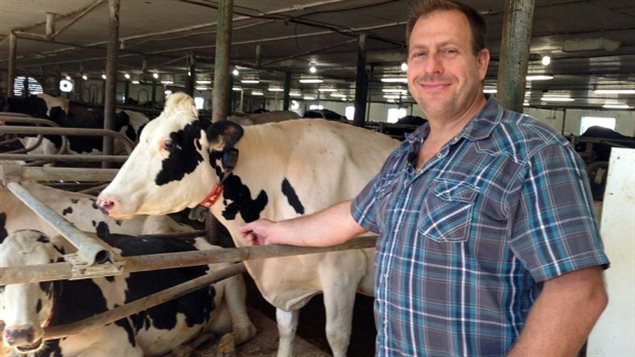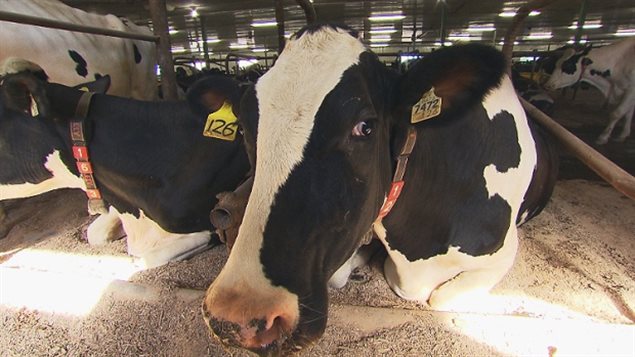With Canada joining 12 other nations in the signing of the international trade deal, the Trans-Pacific Partnership (TPP), many industries in Canada will need readjusting, some
One is the dairy industry, long protected by a supply management system.
Sylvain Charlebois says Canadian dairy farmers have a major rethinking to do if they are to survive. He is a professor in Food Distribution and Policy College of Business and Economics, Food Institute, University of Guelph, Ontario. I reached him in Innsbruck Austria where he is on a teaching/research gathering year.
Listen
Professor Charlebois says the Canadian supply system for milk and dairy is one of the most expensive in the world. He points out that to produce 100kg of milk in Canada, it costs $US 72, compared with $US 35 in the United States.
He says that because of the supply management system, Canadian dairy producers have done very little to develop markets outside Canada, and will soon be facing stiff competition from foreign producers such as the US, Australia, and New Zealand, all of whom have been demanding access to Canada’s market.
Six percent of Canada’s dairy market opens to foreign producers
While Canadian negotiators and politicians say the TPP only allows for a small entry to the Canadian market of 3.5 percent, he points out that combined with an earlier deal with the EU, the foreign entry into Canada’s dairy product market is actually closer to 6 percent.
Canadian Dairy Information Centre (Govt Canada)
Some farmers just cannot and will not compete, full stop. With the diverse nature of our domestic market, hobby farms with fewer cows will always have a place in our economy, but a broader, more aggressive model cannot afford to financially support many of them, especially in Canada. Provisions ought to be made to encourage some to exit.
He does say however, that Canadian farmers can compete, if the willingness to adapt is there. He points to the small Canadian wine market, expected to collapse under the Free Trade Agreement with the US, and be swamped with cheaper, but good quality massive production of California wines.

Instead Canadian producers, adopted new technologies and focussed on quality, producing excellent low to mid-price table wines, and internationally award-winning mid and premium-priced wines and ice wines.
Professor Charlebois says the dairy industry, like Canada’s wine industry can compete and thrive but it now needs a clear strategy both domestically and internationally, something it hasn’t embraced or sought to develop in the past.







For reasons beyond our control, and for an undetermined period of time, our comment section is now closed. However, our social networks remain open to your contributions.